Pilates: perfect abs and beautiful posture. Pilates for beginners at home Pilates 15 minutes a day
Now many women have begun to look for a set of Pilates exercises for beginners, 15-minute video tutorials for weight loss are all great. But you need to understand what these short workouts are good for maintaining the result, but to get it you need to make a little more effort.
The most important thing is to first go to professional trainer so that he helps to create a program that will suit everyone according to his personal wishes, age, level of training and the desired result. After you have worked with a trainer, you will decide on a set of exercises, correct breathing and a special approach to Pilates, and you can already safely practice at home on your own.
What is Pilates

What kind of wonderful system is this, which is gaining more and more popularity, and only in the 21st century reached our country, although it has been known for quite a long time in the world, and is effectively used everywhere. The system arose in the last century, and was invented by the doctor Joseph Pilates, who gave the system its name. The doctor was in childhood, as they say, a squishy, weak, skinny, sickly teenager, everyone mocked him, he could not hit back anyone, and was very worried. Growing up, Josef said to himself - I will become strong and hardy, and no one will mock me!
Pilates had willpower and mind from birth, unlike a frail body, and he began to develop a special set of exercises that even such squishy people like him can do. As a result of the developed exercises, Josef became strong, strong and fit, and his system conquered the whole world.
Soon, the system began to be used for the rehabilitation of soldiers, circus performers began to use it in their preparatory programs, and there the Pilates doctor's exercise system went to walk around the world, bringing joy to many thousands of people.
How is Pilates different from other workouts?
The very first difference is that anyone can do Pilates - from a thin teenager to elderly debilitated people and obese individuals with overweight 20 kg or more. The system involves smooth and slow exercises that anyone can do, the main thing is to approach it correctly, and the result will not keep you waiting.
Principles of the Pilates System
The system assumes some principles, which give excellent results if they are strictly followed.
Smoothness of movements, the average pace of training, the absence of jerks and excessive effort.
Breathing is the main principle, you need to breathe correctly in accordance with the rhythm of training.
Relaxation and isolation from problems and external stimuli, concentration of attention.
Correct position body, retracted abdomen.
Coordination of movements, concentration on the internal sensations that arise during the exercise.
Gradual increase in loads - start small.
Regularity - required condition. By skipping classes, you stress the body and delay the result for a long time.
System Benefits

Connoisseurs say that the benefits of Pilates cannot be overestimated. Gentle, smooth movements strengthen your muscles, warm up and stretch them. Pilates (this is its feature) - involves, in addition to large ones, many small and deep muscles. The main thing in the system is not the speed and intensity of classes, but the regularity and quality. In addition, people can do it after injuries, who have problems with the joints and spine, with the heart, different ages and builds.
What are the benefits of Pilates
Improves blood circulation, which is important for people with sedentary work. We can say that Pilates is a salvation for office workers and freelancers. Flaccid muscles they become from sedentary work, are activated, the body gains flexibility and tone, there is careful work with such an important part of the body as the spine. therefore, with osteochondrosis cervical it's just a wonderful rescue.
The Josef system strengthens the muscular corset, improves coordination of movements, helps to better control the body, relieves pain in the neck, shoulders and back. And importantly, Pilates can be practiced at home, which is important for people who cannot go to the gym.
What is more important - the system is suitable for children, pregnant women, women after childbirth, people after injuries and the weakened.
Benefits for weight loss
For a long time already, this system began to be used for weight loss, even by those people who could not do it with other loads and exercise systems. With the right approach, a person throws off an extra load of kilograms of fat, becomes slim, fit, gains flexibility, and fixes the result for a long time. The main thing is the regularity of the program, in slow pace thoughtfully focusing on exercise. Beginners work on the floor, those who have already gained experience in Pilates can connect a simulator and equipment, for ordinary people there is enough floor and additional equipment, usually professionals already use simulators.
And finally - watch video tutorials that will help you maintain the best shape in 10 or 15 minutes of exercise.
On the pages of our site, we have already talked about the effectiveness of the Pilates method for losing weight and improving the quality of the body. And now we offer you a unique selection of Pilates exercises for problem areas , which will help you strengthen your muscles, tighten your stomach, improve the shape of your buttocks and legs.
Pilates exercises are especially worth paying attention to for those who, due to problems with joints and blood vessels. Also regular classes Pilates helps to get rid of back problems, straighten the spine, improve posture and strengthen the muscular corset.
Features of performing exercises from Pilates:
- When doing Pilates exercises try to straighten your back, straighten your shoulders and pull them back. We keep the body taut and collected, it should not be relaxed.
- In the plank position, we do not bend, we do not lower and we do not raise the pelvis up. The body should form one straight line.
- When doing Pilates exercises on the back the lower back should not come off the floor and bend, try to press it to the floor. We pull the stomach to the spine, do not relax it.
- During classes, we do not help ourselves with the neck, we work only with the muscles of the core. The back of the head is pulled back and up.
- Pilates exercises performed for quality, and not on quantity and speed. Repeat each exercise no more than 15-20 times, but do it slowly and thoughtfully.
- When practicing Pilates, you should be focused on the muscles and their work. For starters, do not do Pilates for more than 20 minutes so that your attention does not wander, as it happens with a long workout.
- Pilates is not recommended for exacerbations of diseases of the musculoskeletal system.

We offer you 60 Pilates exercises for problem areas, which will mainly help you work. over the muscles of the abdomen, back, thighs and buttocks . All exercises are divided into two large groups: for beginners and for more advanced. This collection includes the main basic exercises from Pilates and also the most popular and effective modifications. This complex will help you effectively and efficiently work on all muscle groups.
For both beginners and advanced, we have divided Pilates exercises into 3 groups:
- Exercises for the abdomen, back and muscle corset
- Exercises for the thighs and buttocks
- Upper Body Exercises
How do you understand division is very arbitrary. For example, many exercises for the abdomen and back also involve the muscles of the legs and buttocks. Or in almost all exercises for the upper body, not only the muscles of the arms and shoulders are involved, but also the stomach, buttocks and legs.
Since there are many exercises, and it is not possible to remember them after one reading, we recommend that you bookmark this article (to bookmark it, use the keyboard shortcut CTRL + D) in order to return to a selection of Pilates exercises at the right time for you.
30 Pilates Exercises for Beginners
Pilates exercises for the abdomen and back
1. The Hundred (Hundred)

2. Crunch (Twisting)

3. Reverse Crunch (Reverse twisting)

4. Leg Extension

5. Leg Changes

6. Side Crunch (Twisting to the side)

7. Twist Crunch

8. Single Leg Stretch

9. Straight-Leg Stretch

10. Russian Twists (Turns of the body)

11. Side Heel Reaches

12. V-Crunch

13. Bird Dog (Rise of arms and legs on all fours)

14. Lower Back Extension (Hyperextension)

15. Lower Back Letter ‘T’

16 Swimming

1.Bridge( Glute Bridge)
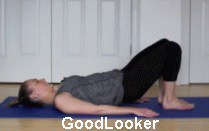
2. Leg Raise Bridge

3. Donkey Kick (Rise of the legs on all fours)

4. Clam (Diamond Leg Raise)

Or this option:

5. Side Leg Lift

Or this option:

6. Inner Leg Lift (Inner Leg Lift)

7. Kneeling Side Kicks

Exercises from Pilates for the upper body:
1. Plank (bar)
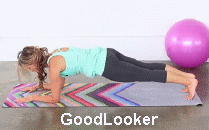
2. Plank Leg Lift

3. Side Plank Mermaid Raise (Mermaid)

4. Side to Side Plank

5. Upward Plank (Reverse plank)

6. Push-up Knee + Leg Lift

30 Advanced Pilates Exercises
Pilates abdominal exercises and back
1. The Hundred Leg Straight ("Hundred" with a straightened leg)

2. Double-Leg Stretch

3. Double Straight-Leg Stretch

4. Roll-up (Full twist)

5. Sit-up (Torso lift)
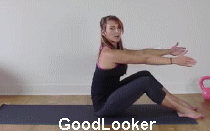
6. Rolling Like a Ball (Rolls on the back)

7. Boat (Boat)
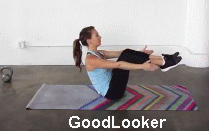
8. Russian Twist Boat

9 Crisscross (Bicycle)

10 Scissors
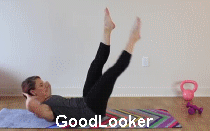
11. Leg Circles

12. Side Jackknife (Side Fold)

13. Lift Crisscross Leg

14. Superman (Superman)

15. Advanced Swimming

Pilates exercises for legs and buttocks
1. Bridge One Leg

2. Bridge Circle Leg

3. Toe Bridge

4. Donkey Leg Circle

5. Front Kick Leg (Mahi leg on the side)

6. Closing Leg

7. Leg Circles Circular movements foot on back)

8. Leg Pulses

9. Saddlebag Shaver

Pilates upper body exercises
1. Push-up (Classic push-up)

2. Down dog + Push up

3. Knee to Inside Elbow Plank

4. Side Plank Leg Lift

5. Side Plank Crunch

6. Side Plank Oblique Twists

7. Plank Leg Pulse

Thank you youtube channels for the gifs: The Live Fit Girl, Kathryn Morgan, FitnessType, Linda Wooldridge.
Just starting out with Pilates? Then we offer you ready plan classes with basic set simple exercises from Pilates ! If any exercise is not working for you or causes discomfort, skip it or modify it to an easier version.
- The Hundred (Hundred): 30 seconds
- Crunch (Twisting): 15 times
- Leg Changes: 15 reps per leg
- Single Leg Stretch: 10 reps per leg
- Lower Back Letter 'T' (Rise with arm extension): 10 times
- Swimming (Swimming): 10 times on each side
- Bird Dog (Rise of arms and legs on all fours): 10 times on each side
- Bridge (gluteal bridge): 15 times
- Donkey Kick (All-Four Leg Raise): 15 reps per leg
- Clam (Diamond Leg Raise): 15 reps per leg
- Side Leg Lift: 10 reps per leg
- Inner Leg Lift: 10 reps per leg
- Plank (bar): 30 seconds
- Side Plank Mermaid Raise (Mermaid): 10 times on each side
- Upward Plank (Reverse plank): 10 times on each leg
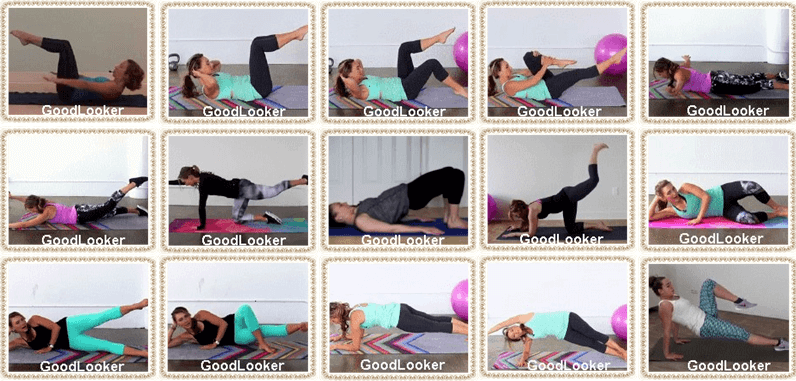
IN modern world, where everyone harbors a desire to be beautiful, it has become not only relevant, but also fashionable to take care of your health and go to the gym or fitness center. Therefore, many beginners, when choosing the optimal direction of sports activity, are faced with the concept of Pilates. This system, which arose not so long ago thanks to Joseph Pilates, combines elements of gymnastics, yoga, fitness and therefore is very popular all over the world. Pilates for beginners is especially in demand, which is explained by the effectiveness of the exercises, the convenience of their implementation in almost any conditions and the lowest risk of injury. And today we will tell you what is the peculiarity of this direction, and what Pilates exercises can be mastered at home.
Pilates is one of the few systems that has a complex beneficial effect on the body, increasing its physical characteristics (flexibility, mobility, plasticity) and allowing you to create an ideal figure.
At  exercises are practiced in almost every fitness center. Therefore, many could see the intimidating-looking Pilates reformer. Undoubtedly, training on such a simulator brings many benefits for human body. However, beginners can start practicing the technique even without the need for special equipment.
exercises are practiced in almost every fitness center. Therefore, many could see the intimidating-looking Pilates reformer. Undoubtedly, training on such a simulator brings many benefits for human body. However, beginners can start practicing the technique even without the need for special equipment.
But before you start classes, you need to know the features of this technique and its basic principles. It is worth noting that the Pilates exercise system was developed by D. Pilates, who personally encountered health problems, as a special therapeutic gymnastics. Therefore, any set of such exercises is designed to get to the deepest and smallest muscles, having carefully worked out each of them.
Regularly practicing according to the method of D. Pilates, you can notice the restorative effect of exercises. In the course of such training, a person becomes more resilient, flexible, plastic, physically toned and slender.
This system is considered unique for a number of reasons:
- allow to strengthen muscle fibers due to their stretching and pumping.
- Training is focused on high-quality and thorough execution of exercises with a small number of repetitions.
- Movements should be soft and smooth, with even breathing.
- The technique is designed in such a way that when performing exercises, all muscle groups are worked out.
- Regular implementation of the complex helps not only improve your health, but also get rid of extra pounds, resulting in a beautiful, toned and slender body.
For those who decide to master this unique practice, the first step is to learn how to perform Pilates lessons for beginners using video instructions. They are specially designed for people with no or minimal sports experience, as well as physical disabilities due to injury or illness.
Where to start for a newbie?
Before starting classes according to the D. Pilates method, it is important to study and take into account the necessary requirements for beginners, which are as follows:
- To perform Pilates exercises for beginners, it is enough to acquire. At first, you can use a regular, but thick towel.
- Schedule a workout in advance, considering that it is not recommended to eat food 1 hour before and after a workout.
- Preferences in clothing should be given to things that do not constrain movement. As for shoes, Pilates exercises are performed barefoot.
- Preview the video tutorial with the complex for beginners to learn the technique and features of each exercise.
- When performing the complex, follow the sequence.
- Pay attention to your feelings, because actions during Pilates should not cause discomfort or pain.
- If you develop a disease during exercise, stop training and consult your doctor.
- Each workout should start with, which lasts from 5 to 10 minutes and includes simple exercises to "warm up" all the muscles in the body.
- Stop exercising at the first sign of fatigue. It is better to continue the lesson later, when the body gains strength to perform the remaining exercises.
Execution features
The features of the exercises include breathing tactics and smooth movements. During Pilates training, it is important to breathe through the chest, while inhaling, taking in air so that the ribs expand. When exhaling, the working muscles should be tried to contract as much as possible.
Control of the abdominal muscles is also a necessary requirement. When carrying out movements, it is important to constantly keep the press in tension, using it as an energy source for the whole body.
And to increase the flexibility of the body, you should try to smoothly stretch the spine while doing exercises. By gradually increasing the distance between the vertebral discs, you can achieve excellent results in the plasticity of the body, as well as strengthening the muscular corset that supports the musculoskeletal system.
First workout
There are about three dozen Pilates exercises for people who are just starting to get acquainted with the system. But in order to master the execution technique and understand the principle of the D. Pilates technique, it is enough to learn how to perform about ten simple exercises that are ideal for the first workout.
You need to start training with a warm-up, as mentioned above. To warm up the muscles, you can perform the following exercises:
- Starting position - lying on your back on the floor. Inhaling deeply, tighten your abs and begin to lift your legs, bending them and pulling your knees to your chest. At the same time, you need to press your legs tightly to the body with your hands, lingering in this position for a few seconds, and then exhale. Remaining in this position, you still need to perform 3 cycles of inhalations and exhalations. It is recommended to do 2 repetitions of the exercise.
- I.p. - the same as in the previous case. With your arms outstretched to the sides, you need to raise your legs bent at the knees so that the thigh and lower leg form a right angle. From this point, legs are simultaneously lowered to the right, then to the left. Straining the press, you need to take deep breaths and exhale, lingering at the top point.
Let's move on to the basics
We will not describe the entire set of Pilates exercises for beginners, but you will find the simplest and most effective of them with phased implementation below.
Hundred (100)
During this exercise, the muscles of the abdominals, neck, upper shoulder girdle, thighs and buttocks. The very name of the exercise comes from the number of respiratory cycles that should be carried out over 10 sets.
Starting position - lying on the floor on your back. Straight arms should be stretched along the body, straight legs tightly pressed to each other, the press is tense, breathing is shallow.
It is worth starting the exercise with the fact that you need to raise your head, hands as shown in the photo. In this position, you should make springy movements with your hands up and down with a small amplitude, inhaling and exhaling superficially 5 times in a row. The total is 10 sets and 100 breaths. 
During this exercise, the abdominal muscles, legs, and back are involved. Additionally, coordination of movements develops and posture improves.
To perform it, you need to sit on the floor on the mat and raise your arms along the body. Rounding your back, shift the center of gravity to the coccyx and lift straight or bent legs. In this position, you need to hold out, balancing only on the coccyx from 10 to 15 seconds. Sets can be performed 9-10. 
Stretching the legs alternately
Stretching the legs alternately allows you to work out straight and lateral muscles press, buttocks, large dorsal muscles. I.p. - Lying on your back. Having connected the legs, they must be torn off the floor by about 40-50 cm, while lifting upper part corps. Tightening the abdominal muscles, pull the bent or straight leg with your hands to the chest, holding it in this position for 10-12 seconds. After returning it to the position on weight, repeat the exercise with the second leg. In total, you can perform from 5 to 10 approaches of the exercise. 
I.p. - the same as in the previous case. Bend your knees and pull them up to your chest to wrap your arms around them. Tightening your abdominal muscles, stretch your legs until they form an angle of 45⁰. At the same time, stretch your arms in the direction opposite to your legs, trying to stretch the spine. Return to starting position. The recommended number of repetitions is 10-15. 
I.p. - bar on the elbows. Take a position so that the body forms a straight line from the base of the neck to the heels. Take a deep breath and at the same time lift your buttocks up while lowering your head down and exhaling. Hold for 5-8 seconds in this position and, having completed another breathing cycle. 
I.p. - Sit on the floor sideways, leaning on your left thigh and straightened left arm. Raise the body up, holding it at the top for 5-10 seconds in tension. At the same time, pull your toes towards you, and look in the direction of the right hand, lying along the body, as shown in the photo. Repeat 8-10 times for each side of this exercise. 
I.p. – Stand up straight against the wall so that your back rests against its surface. Perform squats, trying not to tear your spine and lower back from the wall. Breathing should be deep, not shallow. Perform 10 repetitions for each side. 
I.p. - the same as in the mermaid exercise, but the emphasis is not on the palm, but on the elbow and one knee. From this position, keeping the press in tension, do 10-15 leg lifts up. Switch sides and repeat for the other leg. 
Very effective in improving posture and preventing scoliosis. In parallel, it helps to work out the spinal muscles, abdominal Press, buttocks, thighs and muscles of the upper shoulder girdle. 
To perform this exercise from Pilates, you need to lie on your back and pull up, bending your knees, heels to the buttocks. Putting your hands near your feet, raise your pelvis so that your chest touches your chin. Remember to tighten your abs and breathe evenly. Having lingered at the top point for a few seconds, with an exhalation, return to the SP. Repeat the exercise 10-15 times.
As you can see, Pilates exercises are quite easy to perform. The only difficult moment is the concentration of attention and the need to constantly keep the press in tension. But believe me, you will cope with this after 2 weeks of hard training. Having mastered First level Pilates, you can begin to practice more complex exercises.
It implies the presence of a place where special exercises. Such places are usually called studios, and to those who come across it on the Internet, it may look like a medieval torture chamber with strange straps and metal springs hanging from soft platforms called "reformer".
In fact, it certainly is not about torture. aimed at , good posture, strength and sense of balance at the same time.
In the early 20th century, Joseph Pilates invented a series of movements to help English veterans who had suffered in the First World War recover from their injuries. Since then, as a result of its development, Pilates has become a form of exercise for everyone who is interested in increasing their strength, grace and development. muscular system belly.
While some GYM's According to Pilates are equipped with special mechanisms, then exercises on gymnastic mats are based only on the use of their own weight and can be performed at home with the same success and benefit.
The proposed one will consist of the best exercises on from Pilates specialist Sarah Rubak from New York (USA). The focus when performing these exercises should be done only on quality, not on the number of repetitions. So focus on correct execution each movement, but not increasing the number of repetitions.
How should this Pilates workout be done?
Carefully study in order all the proposed components of the workout and then begin to perform them in accordance with the time schedule at the end of this article.
Are you already a Pilates pro and not a beginner? Just do each exercise longer than the set time. Slow movements and focusing on the correct execution can help even advanced athletes feel the warming up of the muscles. To complicate the task, Sarah Rubak suggests holding dumbbells weighing up to 1 kg during the exercises.
Pilates workout. Exercises
1. Pilates curl
Lie face up with your knees bent. Feet on the floor, arms to the sides. Exhale as you bend and lift your shoulders off the mat, chin toward your chest. Hold your breath for 1 cycle and slowly lower your back as you inhale. When climbing, try to climb from chest in order to include the abdominal muscles in the work and avoid damage to the cervical vertebra (crunchy neck syndrome).

Video:
2. Hundred (The Hundred)
Lie face up with your legs extended straight and resting on the floor. In the first movement, bend and press your knees to your chest. Then lift your head, neck and shoulders off the mat. Stretch your arms out to your sides with palms facing the floor. Extend the legs together with the toes to form a 45 degree angle with the floor. Move your arms up and down while inhaling and exhaling through your nose for a count of five each. We repeat 10 times.

Video:
3. Roll-up
Lie face up with your arms extended towards the ceiling. Exhaling, slowly fold your chin to your chest and roll over to a sitting position with your hands pointing towards your toes. On the next exhale, slowly return to the starting position, vertebra by vertebra, touching the floor. Move slowly and smoothly, avoiding jerks and twitches.
 Video:
Video:
4. Rolling Like A Ball
Sit on the floor, legs bent at the knees, pressed to the chest, hands clasping the legs in the area below the knees. In this position, we lean back and roll down in this position with support from the tailbone to the shoulder blades. On inspiration, we return to the starting position. Use the abdominals to control the touch of the feet on the floor and balance.

Video:
5. Stretching on one leg (Single-Leg Stretch)
In the starting position, lie face up, legs bent at the knees and pressed to the chest. Hands wrap around the legs just below the knees. The shins are in a position parallel to the floor. As you exhale, lift your head, neck, and shoulders off the mat. At the same time, extend the left leg at a 45-degree angle forward, and press the right knee to the chest, clasping the right knee with the left hand and the right ankle with the right hand. Change legs on an inhale, for one beat of the pulse and on an exhale, change legs again. The shoulders do not touch the floor and the abdominal muscles work throughout the exercise.

Video:
6. Stretching on two legs (Double - Leg Stretch)
Lie face up on the mat. Raise your head, neck and shoulders. Grasping your shins with your hands, press your knees to your chest. On an inhale, straighten your legs at a 45-degree angle while extending your arms above your head along your body. As you exhale, return your legs and arms to the starting position. During all movements, do not touch the mat with your shoulders.

Video:
7. Direct stretching on one leg (Single Straight - Leg Stretch)
Starting position lying face up on the floor. The legs are extended upward, perpendicular to the floor. Raise your head, neck, and shoulders off the mat and press right leg as close to the face as flexibility allows. In this case, the hands hold the leg by the calf. Press the right leg to the face twice while the left leg is extended straight and is above the mat. Then repeat the same with the other leg.

Video:
8. Cross slopes (Crisscross)
Lie on the mat face up, hands behind your head, elbows apart. Raise your head, neck and shoulders off the mat. Legs bent at the knees, shins parallel to the floor. Direct the right armpit to the left knee, while stretching the right leg along a high diagonal forward. In the next movement, switch legs. In general, the exercise almost resembles the “Bicycle” exercise discussed in the article.

Video:
9. Straight stretch on both legs (Double Straight - Leg Stretch)
Starting position: lying on the mat, hands clasp and support the back of the head, legs bent and pressed to the chest. Exhale as you lift your upper body off the mat. In this case, the legs straighten and stretch to the ceiling. Lower your legs to a 45-degree angle for three counts and lift again for one count.

Video:
10. Teaser 2 (Teaser II)
Lie face up and hug your knees pressed to your chest. Raise your arms straight above your head and stretch both legs forward in a high diagonal. Stretch your arms back towards your ears. Then we slowly move them towards the legs, rolling into a sitting position. Keep your arms and legs parallel at a 45 degree angle to the surface. From this position, lower and raise your extended legs, doing 3 to 5 repetitions. Then roll down onto the mat slowly, vertebra by vertebra. Return legs to starting position.

Video:
11. Pilates Plank To Push-up
Stand up straight, exhale, lower your chin to your chest, roll your body down to the “rag doll” position and rest your hands on the floor. Moving your hands as if walking, move to the “plank” position without moving your legs from the spot. Push up from the floor in a low position with your body almost touching the surface. Straighten your arms and push up three to five more times. After that, in the same way as in the reverse repetition, take the starting position.
Video:
12. Shoulder Bridge
Lie face up with your knees bent, feet flat on the floor, arms by your sides. While holding this position, stretch your right leg up and kick the imaginary ceiling with your toe. After that, pull the toe of the foot in the direction of the body and lower the leg. Do three to five repetitions and switch legs, doing a similar exercise for the left leg. Then lower your hips down to the starting position.

Video:
13. Double kick (Double - Leg Kick)
Lie face down with your head turned and your right cheek pressed against the mat. Place your hands on the lower back from the back, placing them one on top of the other, palms up. Let your elbows fall to the floor. Hit your buttocks with your heels two to three times. After that, straighten your legs, keeping them almost parallel to the floor. Then stretch your arms to your feet and lift your chest off the mat. Look straight ahead (You should feel pressure in your lower back). Lower your chest to the mat and change your cheek in the starting position to repeat the same movements.
You are guaranteed to get great results.
Joseph Pilates gave us unique method, which allows you to keep your body in shape without mind-blowing loads. If you decide to go in for sports, but you have little time and physical training small - this material is for you. Start getting to know your body with Pilates: give up extra pounds, correct your posture and strengthen your muscle frame.
In the article we will talk about the technical features of the method and show the main complexes for beginners. Once you get to know Pilates, you will definitely want to try the technique for yourself. Don't hesitate, start exercising today, because these exercises do not require any special equipment.
Home PilatesWhy is it worth looking at?
- Pilates is aesthetically pleasing and feminine, which is reflected both in the process and in the result.
- A useful point is the complexity of training. In an hour, you can work out all the muscles from superficial to deep, and at the same time.
- Despite the seeming ease of performing exercises, Pilates - power training strengthening muscles. He works on both external and internal muscles a person who “hold” the organs, joints and help to move.
- Pilates is mindfulness training. All of his techniques are based on understanding when which muscle works and by what percentage. Constant concentration dispels thoughts about everyday problems and difficulties at work.
- Special stretch! By default, we stretch the muscles during exercise, because all strength work goes through stretching.
- Pilates develops flexibility, improves control of movements in life.
- A huge advantage: in Pilates, the level of training is not important.
If you still don't have enough reason to get up and start exercising, which would be extremely surprising, here are seven more benefits of Pilates:
Pilates at home- Preparation
Let's start with the basics. Before each Pilates workout, we devote 5-7 minutes to breathing and the main stance:
Main rack
Stand straight, spread your legs shoulder-width apart, bend your knees slightly, bring your pelvis forward and slightly pull in your stomach. Squeeze your shoulder blades and stretch your crown up, while not stretching your chin or lifting your shoulders. Relax your arms along your body. In the main stance, the body should be fully extended, the lower back should be flat. From this position, allpilates exercises for beginners. When exercising on the floor, fully press your lower back to the floor.
Breath
We always breathe not with the stomach, but with the chest. The lungs should fill and empty as much as possible, breathe slowly and calmly. If you breathe correctly, then when you inhale, you will feel that your back is swelling. Thanks to this breathing technique, the flow of oxygen increases and the metabolism accelerates.
Pilates for beginners at home: the best complexfor all muscle groups
Additional equipment - a "square" chair with a back and stable legs, standing on a non-slip surface. The complex was compiled according to the lessons of Valentina Gernat, instructor of Yogalife.
Chair squats

Reverse chair push-ups

Knee twists

shoulder bridge


Bench

It was an express Pilates complex. For a more thorough study of all muscle groups, seepilates video for beginners at homeand try the workout in action.
Pilates accents on different parts of the body
One of the biggest benefits of Pilates is combating crooked posture. As you already understood, the peculiarity of the technique is the “stretching” of the spine. By strengthening your back muscles, you can easily work out the abs. Therefore, I suggest that you familiarize yourself with the exercises for the upper shoulder girdle withReemala Pilates & Garuda studio.
Having strengthened your back, proceed to work out the press. About how to reach thin waist and get rid of excess weight read in materialPilates exercises for a flat stomach and abs .
Pilates home workoutswork with the buttocks. Here is an effective ten-minute complex for you. Performing the exercises technically correctly, you will achieve results in the near future:
Shoulder bridge with pelvic lifts and pulses


Leg raise with hip flexion and pulses


Contraindications
Despite the fact that Pilates is considered one of the safest types of physical activity, beginners should exercise some caution, especially if there are chronic diseases or injuries. You should not start classes if you are sick with seasonal viral diseases, let the body recover.
Within 2-3 months after an injury or operation, even a small load is contraindicated, so classes will have to be postponed until complete recovery.
Pilates for beginners- this is a great way not only to work out all muscle groups, but also to restore internal balance. Do not rush to complicate your classes, it is important to thoroughly work out the technique of each exercise. Learnpilates for beginners at home, train regularly, and after 2-3 months you will be able to move to the next level of difficulty, which will be another step towards physical and spiritual improvement!




